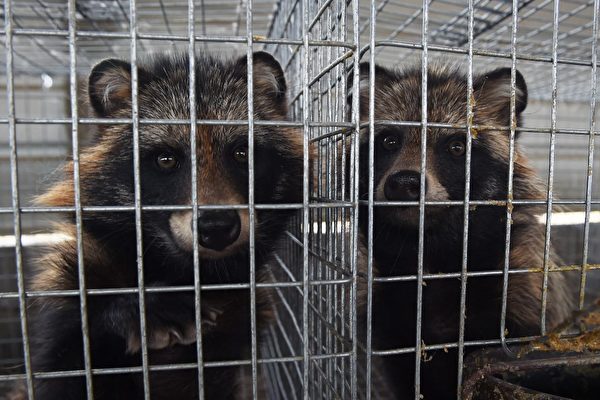Animal protection organization Humane Society International (HSI) has announced that it has conducted an investigation into five fur farms in China breeding foxes, raccoons, and minks, and has found that these farms are at high risk of possible animal-to-human disease transmission. The research was initiated by HSI at the end of 2023.
According to a report by Reuters on April 15th, HSI stated that farms in Hebei and Liaoning provinces in northern China each house between 2,000 to 4,000 animals in tightly packed conditions, including close proximity to poultry.
Alastair MacMillan, a visiting professor at the School of Veterinary Medicine at the University of Surrey, explained that the high-density breeding of animals can facilitate rapid virus transmission among animals through droplets, with the potential to spread to humans.
MacMillan elaborated that the rapid circulation and mixing of different virus strains among animals has driven their adaptation to mammalian hosts, leading to the development of concerning mutant strains and increasing the possibility of human infection.
The Chinese Ministry of Agriculture and Rural Affairs has not responded to Reuters’ requests for comments on the conditions of fur farms and the risk of disease transmission.
MacMillan emphasized that from the perspective of disease transmission and public health, the conditions there are extremely concerning, as it is well known that such fur-bearing animals are prone to respiratory viruses that can be transmitted to humans.
Last year, data briefly uploaded to a database by Chinese scientists during the early stages of the COVID-19 pandemic indicated that raccoons may have also been involved in the transmission of the virus to humans.
Photos and a video from HSI reviewed by Reuters show animals being kept in cramped cages. Reuters could not independently verify this video.
Veterinary experts pointed out that many animals exhibit repetitive pacing behavior, which is associated with psychological distress.
“Distressed animals, piled-up animal waste, barren cages, and concerns of zoonotic diseases stand in stark contrast to the glossy image the fur trade tries to portray,” said Peter Li, HSI’s China policy expert.
Despite China’s fur production aligning with global trends and declining by 50% from 2022 to 2023, and nearly 90% over the past decade, the demand for fur seems to remain strong.
Online platforms such as Xiaohongshu and Weibo show users discussing wearing fur as an ideal and practical warmth measure.
Editor: Lin Yan#

